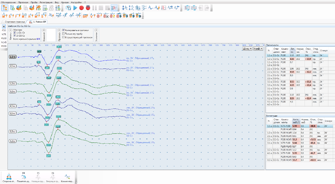Catalog
Search
14 products
View:
- Selected: 0Applying
- Selected: 1Names
- Selected: 0Manufacturer
- Selected: 0Made in
- Selected: 0Additional
View:
14 products
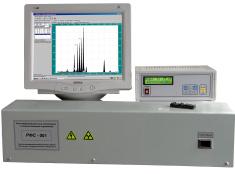
Desktop X-ray fluorescence spectrometer RFS–001
The spectrometer is designed to measure the intensities of analytical lines of chemical elements and, by recalculating them, determine the mass concentration of elements from P(15) to U(92) contained in the analyzed sample. The process of analysis from a set of data and their processing to obtaining results in the form of a table of concentrations of the elements being determined is automated and performed using a personal computer. The spectrometer can be used in various fields of science and technology (ecology, biology, medicine, agriculture, food industry, geology, mining, geophysics, sanitary and epidemiological control, etc.).
Department of Analytical Instrumentation UFY
Rostov-on-Don
Produced in: Rostov-on-Don
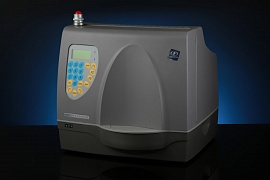
Spectrometer SPECTROSCAN MAX-G
The spectrometer is designed to determine the contents of elements in the range from Ca to U in substances in solid, powdery, dissolved states, as well as deposited on the surface or deposited on filters.
The principle of operation of the spectrometer is based on irradiation of the sample with primary radiation from an X-ray tube, measurement of the intensity of secondary fluorescent radiation from the sample at wavelengths corresponding to the elements being determined, and subsequent calculation of the mass fraction of these elements according to a pre-constructed calibration characteristic, which is the dependence of the content of the element being determined on the measured intensity.
Secondary fluorescent radiation is decomposed into a spectrum using a crystal analyzer. Due to this, the spectrometer has a high resolution, and therefore the ability to accurately analyze complex multicomponent substances.
NPO Spektron
Saint Petersburg
Produced in: Saint Petersburg
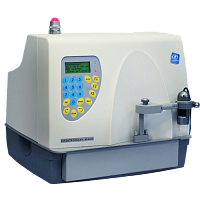
MAX-GF1(2)E-C Spectrometer
The X-ray fluorescence spectrometer SPECTROSCAN MAX-GF1(2)E-C combines two methods of detecting an analytical signal: diffraction on a crystal (wave dispersion - WDX) and energy dispersion (EDX) method, as well as sample delivery adapted for the analysis of large-size images. The collimation of the primary radiation of the X-ray tube and the special design of the sample presentation make it possible to analyze the sample over an area of 1 cm2 in 1 mm increments, and thus investigate the distribution of elements over an area.
The spectrometer is designed to determine the contents of elements in the range from Ca to U in substances in solid, powdery, dissolved states, as well as deposited on the surface or deposited on filters. With the help of fixed energy dispersion channels, any one or two additional elements in the range from magnesium (Mg) to calcium (Ca) can be determined.
With the help of this modification of the spectrometer, forensic and customs examinations, judicial and forensic medical examinations, as well as art-historical examinations are carried out.
NPO Spektron
Saint Petersburg
Produced in: Saint Petersburg
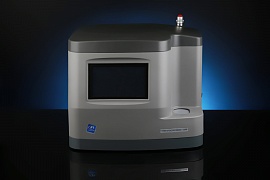
Spectrometer SPECTROSCAN MAX-GVM
The spectrometer is designed to determine the contents of elements in the range from Na to U in substances in solid, powdery, dissolved states, as well as deposited on the surface or deposited on filters.
The principle of operation of the X-ray spectrometer is based on irradiation of the sample with primary radiation from an X-ray tube, measurement of the intensity of secondary fluorescent radiation from the sample at wavelengths corresponding to the elements to be determined, and subsequent calculation of the mass fraction of these elements according to a pre-constructed calibration characteristic, which is the dependence of the content of the element to be determined on the measured intensity.
Secondary fluorescent radiation is decomposed into a spectrum using a crystal analyzer. Due to this, the X-ray fluorescence spectrometer has a high resolution, and therefore the ability to accurately analyze complex multicomponent substances.
NPO Spektron
Saint Petersburg
Produced in: Saint Petersburg
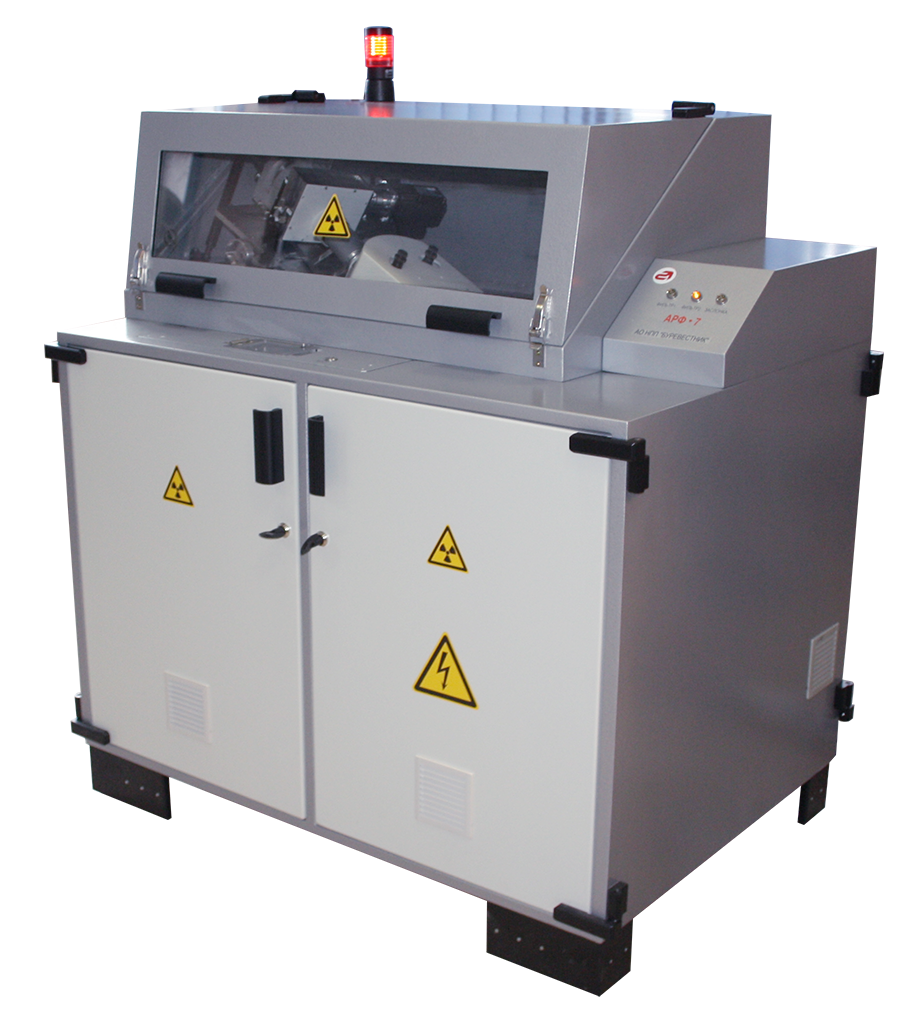
Specialized X-ray wavelength dispersive analyzer ARF-7
Specialized wavelength-dispersive XRF analyzer based on the Cochois scheme is designed for high-precision determination of chemical elements U, Th, Mo, Au, W, Tl, As, Pb as well as other elements in ores, rocks and when developing the technogenic fields.
Possibility to determine groups of elements without readjustment of crystal-analyzer.
Exceptionally high resolution of the Koshua X-ray optical scheme with crystal-analyzer quartz 1011.
Developed mathematical support.
Principle of analyzer operation is based on the excitation of the fluorescent radiation of sample atoms being under examination by radiation coming from an X-ray tube. Spectrum decomposition of the fluorescence radiation is performed according to Cauchois method. The fluorescence radiation focused by analyzing crystal and standard line are marked on Rowland focal circle. Then, they are recorded by X-ray radiation detector in turn. The intensity of the fluorescent irradiation with a particular wavelength is directly proportional to the chemical element concentration in the material under examination.
Burevestnik
Kolomyagi
Produced in: Saint Petersburg
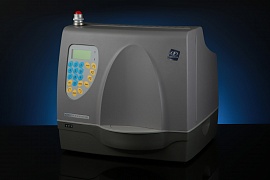
Sulfur Analyzer SPECTROSCAN SW-D3
The analyzer is designed to determine the mass fraction of sulfur in automotive fuel in accordance with GOST R 52660-2006 / GOST ISO 20884-2016, ASTM D6334, as well as in oil and petroleum products according to GOST R 53203-2008 / GOST 33194-2014, ASTM D2622, GB/T 11140-2008. Depending on the customer's needs, the analyzer is configured to work in accordance with a particular standard.
Implements an arbitration method for measuring the mass fraction of sulfur in automobile fuel of the third, fourth and fifth classes.
The device is designed specifically for high-quality and fast X-ray fluorescence analysis of fuel in accordance with the technical regulations "On requirements for automotive and aviation gasoline, diesel and marine fuel, jet fuel and heating oil", which establishes an arbitration X-ray fluorescence wave dispersion method for determining the mass fraction of sulfur in automotive fuels of the third, fourth and fifth classes.
The wave dispersion sulfur analyzer SPECTROSCAN SW-D3 is designed taking into account all the requirements for the process of X-ray fluorescence elemental analysis of low sulfur contents in petroleum products. The operator's actions when performing measurements are minimized:
- the number/name of the sample is entered from the built-in keyboard;
- the sample is poured into two cuvettes;
- the obtained samples are placed in the analyzer and measurements are started.
The analyzer performs all subsequent actions automatically without operator involvement:
- calculates and displays the sulfur content in the sample;
- calculates convergence - the difference in determining the mass fraction of sulfur in the first and second samples;
- prints measurement results on the built-in printer.
NPO Spektron
Saint Petersburg
Produced in: Saint Petersburg
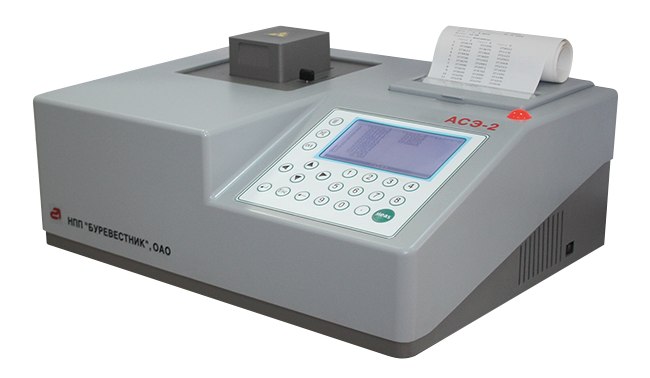
Energy dispersive sulfur-in-oil analyzer ASE-2
The ASE-2 energy dispersive sulfur analyzer is designed to measure the mass fraction of sulfur in unleaded gasoline, diesel fuel, crude oil, kerosene, oil residues, lubricating oil bases, hydraulic oils, jet fuels and other distillate oil products.
X-ray radiation from a low-power X-ray tube, converted by a primary radiation filter, excites fluorescence emission from the atoms of the sample being analyzed. The fluxes (primary X-rays scattered on the sample and secondary fluorescence) of radiation fall on a gas proportional counter, whereby the fluorescence radiation of sulfur atoms (SKa) is separated from the radiation with other energies by means of selective filters. The intensity of the fluorescence emission of sulfur atoms registered by the gas proportional counter is proportional to the mass fraction of sulfur in the analyzed sample.
Burevestnik
Kolomyagi
Produced in: Saint Petersburg

X-ray fluorescence wavelength dispersive flowstream pulp, suspension and solution analyzer AR-35
The AP-35 analyzer is a fully automated analytical complex designed for continuous X-ray fluorescence analysis of the chemical composition of slurries and solutions in flow. The instrument has a movable software-controlled measuring head with an X-ray tube and fixed spectrometric channels (up to 8), each of which can be set up for any chemical element (from Ca to U). In operation, up to 15 flow cells are measured by the head according to a preset program.
Multi channel capability (up to 15 products to be measured).
Compatibility with automation systems for sampling, sample delivery, data handling and presentation, data archiving.
Link to factory process control system
High expressiveness, high analytical precision, low detection limits, reproducibility
High reliability.
The principle of operation is based on the excited fluorescence produced by the atoms of the material under analysis through the radiation of an X-ray tube. The fluorescence radiation of a particular chemical element is picked up by the crystal analyzer, and then the radiation at a specific wavelength is detected by an X-ray tube detector. The intensity of the recorded fluorescence radiation of a certain wavelength is directly proportional to the mass fraction of the chemical element in the substance under study.
Burevestnik
Kolomyagi
Produced in: Saint Petersburg
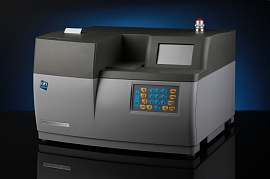
Sulfur Analyzer SPECTROSCAN SW-D3
The analyzer is designed to determine the mass fraction of sulfur in automotive fuel in accordance with GOST R 52660-2006 / GOST ISO 20884-2016, ASTM D6334, as well as in oil and petroleum products according to GOST R 53203-2008 / GOST 33194-2014, ASTM D2622, GB/T 11140-2008. Depending on the customer's needs, the analyzer is configured to work in accordance with a particular standard.
Implements an arbitration method for measuring the mass fraction of sulfur in automobile fuel of the third, fourth and fifth classes.
The device is designed specifically for high-quality and fast X-ray fluorescence analysis of fuel in accordance with the technical regulations "On requirements for automotive and aviation gasoline, diesel and marine fuel, jet fuel and heating oil", which establishes an arbitration X-ray fluorescence wave dispersion method for determining the mass fraction of sulfur in automotive fuels of the third, fourth and fifth classes.
The wave dispersion sulfur analyzer SPECTROSCAN SW-D3 is designed taking into account all the requirements for the process of X-ray fluorescence elemental analysis of low sulfur contents in petroleum products. The operator's actions when performing measurements are minimized:
- the number/name of the sample is entered from the built-in keyboard;
- the sample is poured into two cuvettes;
- the obtained samples are placed in the analyzer and measurements are started.
The analyzer performs all subsequent actions automatically without operator involvement:
- calculates and displays the sulfur content in the sample;
- calculates convergence - the difference in determining the mass fraction of sulfur in the first and second samples;
- prints measurement results on the built-in printer.
NPO Spektron
Saint Petersburg
Produced in: Saint Petersburg
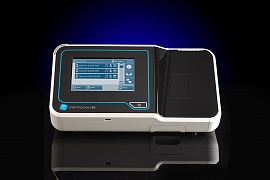
Sulfur Analyzer SPECTROSCAN SE
The analyzer is designed to determine the mass fraction of sulfur from 3 million-1 (ppm) in oil and petroleum products in accordance with GOST R 51947-2002, GOST 32139-2019, GOST R EN ISO 20847-2010 / GOST ISO 20847-2014, ASTM D4294, GB/T 17040-2019.
Implements an arbitration method for measuring the mass fraction of sulfur for oil, automotive fuels of class K2, K3, jet engine fuel, aviation gasoline, fuel oil and marine fuel, and is also used for operational control of sulfur content in automotive fuels of Class 4 and 5, gas oils, bitumen, lubricating oils and their components and other petroleum products.
The analyzer greatly simplifies the routine analysis procedure. Intuitive interface provides convenience and ease of use.
The analyzer is a proprietary development of NPO "SPEKTRON". The device is manufactured in St. Petersburg mainly from domestic components.
Minimum operator actions:
- calibration is selected and the name of the sample is entered;
- two cuvettes are filled with a sample;
- the obtained samples are placed in the analyzer and measurements are started;
- all subsequent actions are performed automatically:
- the average value of the mass fraction of sulfur is calculated and displayed;
- repeatability is calculated;
- the results are checked for compliance with the selected standard;
- measurement results are printed on the built-in printer and saved.
NPO Spektron
Saint Petersburg
Produced in: Saint Petersburg
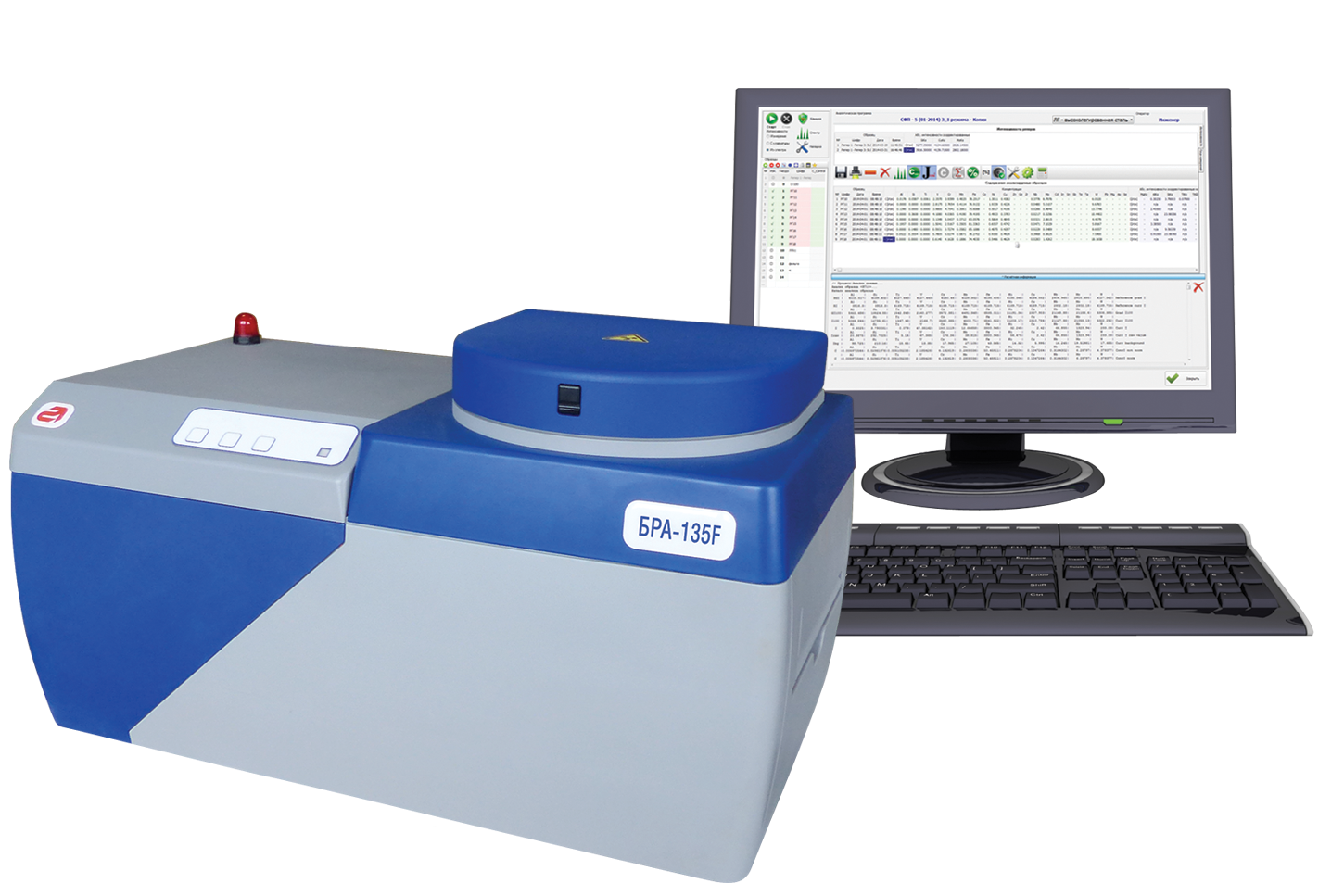
Universal energy dispersive X-ray fluorescence spectrometer BRA-135F
The XRF analyzer BRA-135F is an energy dispersive spectrometer which can simultaneously determine the presence of up to twenty chemical elements - from 9F to 92U - in the analyzed sample. Samples can be in liquid, solid, powdered or deposited on a substrate. The analyzer captures concentrations from tenths of mg/kg.
The model BRA-135F performs quantitative/semi-quantitative spectral analysis of steel and alloys. It also performs spectral analysis of oil, petroleum and other petroleum products, detecting in their composition even the smallest concentrations of impurities of various metals.
The vacuum sample chamber and ultra-slim detector inlet provides a low detection limit in the range of light elements from 9F to 17Cl.
The high-performance silicon drift detector (SDD) with an energy resolution of less than 135eV allows the separation of spectral lines of almost all elements, which makes the analysis of complex multicomponent substances (high-alloy steels, precision alloys, polymetallic ores, etc.) possible.
Burevestnik
Kolomyagi
Produced in: Saint Petersburg
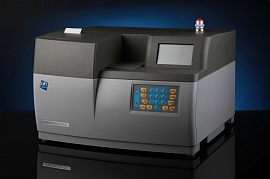
Chlorine and Sulfur Analyzer SPECTROSCAN CLSW
The device is developed on the basis of the analyzer SPECTROSCAN SW-D3, allows you to determine the mass fraction of organochlorine compounds in oil according to GOST R 52247-2004 (method B) and GOST 33342-2015 (method B), the sulfur content in automotive fuel, oil and liquid petroleum products in accordance with GOST R 52660-2006 / GOST ISO 20884-2016 and GOST R 53203-2008 / GOST 33194-2014, as well as to determine the mass fraction of chlorine and sulfur in any liquid samples in accordance with standardized techniques (methods).
Implements arbitration methods for determining the mass fraction of organochlorine compounds in oil and the sulfur content in automobile fuel.
The analyzer has successfully passed the interlaboratory tests under the guidance of JSC "VNII NP" (TK31). As a result of the tests, the accuracy of the method for determining the mass fraction of organochlorine compounds using the SPECTROSCAN CLSW analyzer was found to comply with the requirements of GOST R 52247-2004, method B, and the accuracy of the method was determined in the range of the mass fraction of organochlorine compounds from 1 ppm to 50 ppm.
Determination of the mass fraction of organochlorine compounds in oil involves sampling of oil, distillation of naphtha fraction (204 ° C), washing of naphtha from hydrogen sulfide and inorganic chlorides. An internal standard is introduced into naphtha extracted from oil – a solution of bismuth in a non-polar solvent and an analysis is carried out.
When determining the sulfur content, the analysis is carried out without additional sample preparation.
The analyzer is a proprietary development of NPO "SPEKTRON". The device is manufactured in St. Petersburg mainly from domestic components. There is a conclusion of the Ministry of Industry and Trade on the production of products in the territory of the Russian Federation.
The operator's actions when performing measurements are minimized:
- the number/name of the sample is entered from the built-in keyboard;
- the sample is poured into two cuvettes;
- the obtained samples are placed in the analyzer and measurements are started.
The analyzer performs all subsequent actions automatically without operator involvement:
- calculates and displays the chlorine and/or sulfur content in the sample;
- calculates convergence - the difference in determining the mass fraction of an element in the first and second samples;
- prints measurement results on the built-in printer.
NPO Spektron
Saint Petersburg
Produced in: Saint Petersburg
